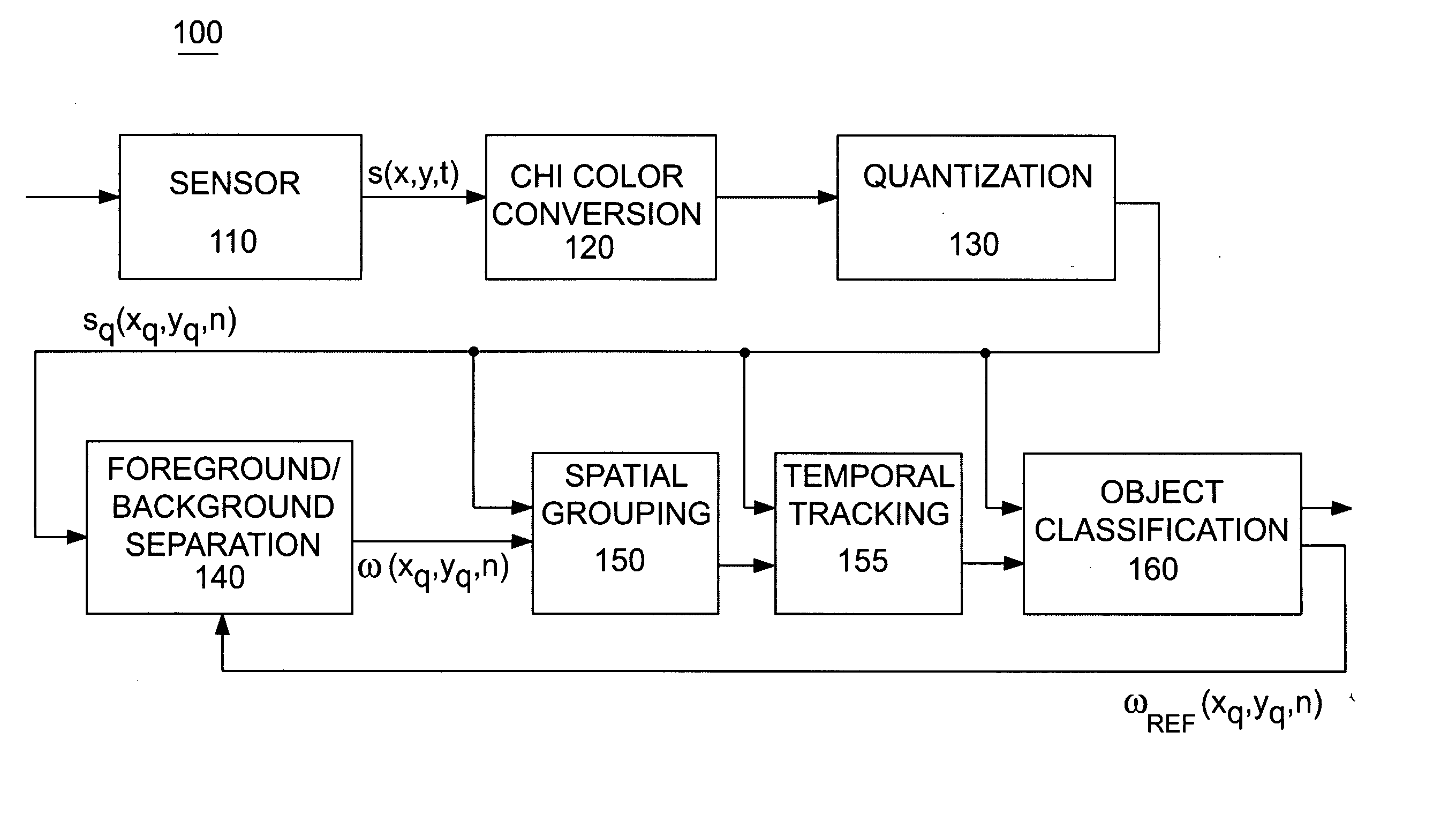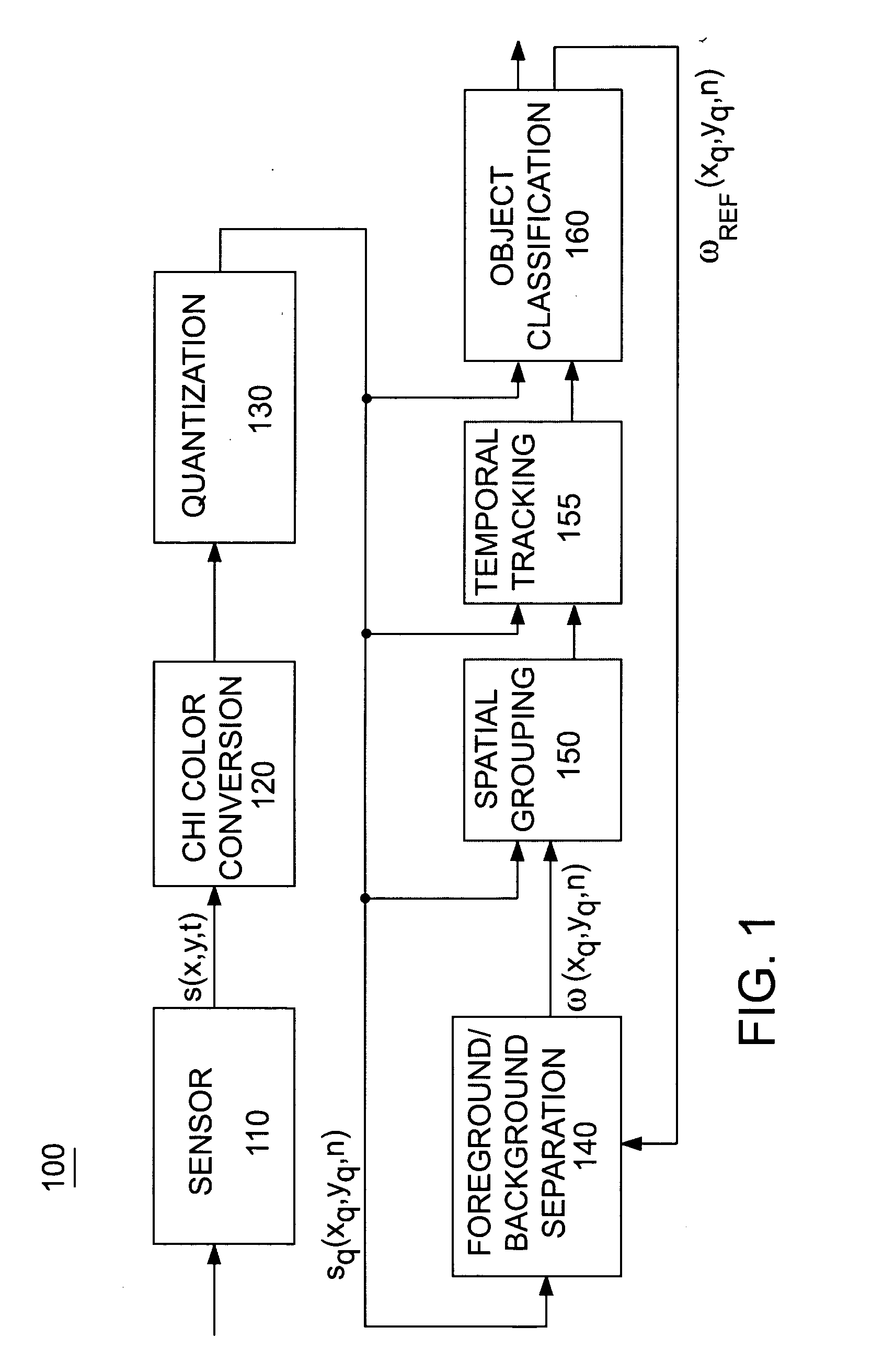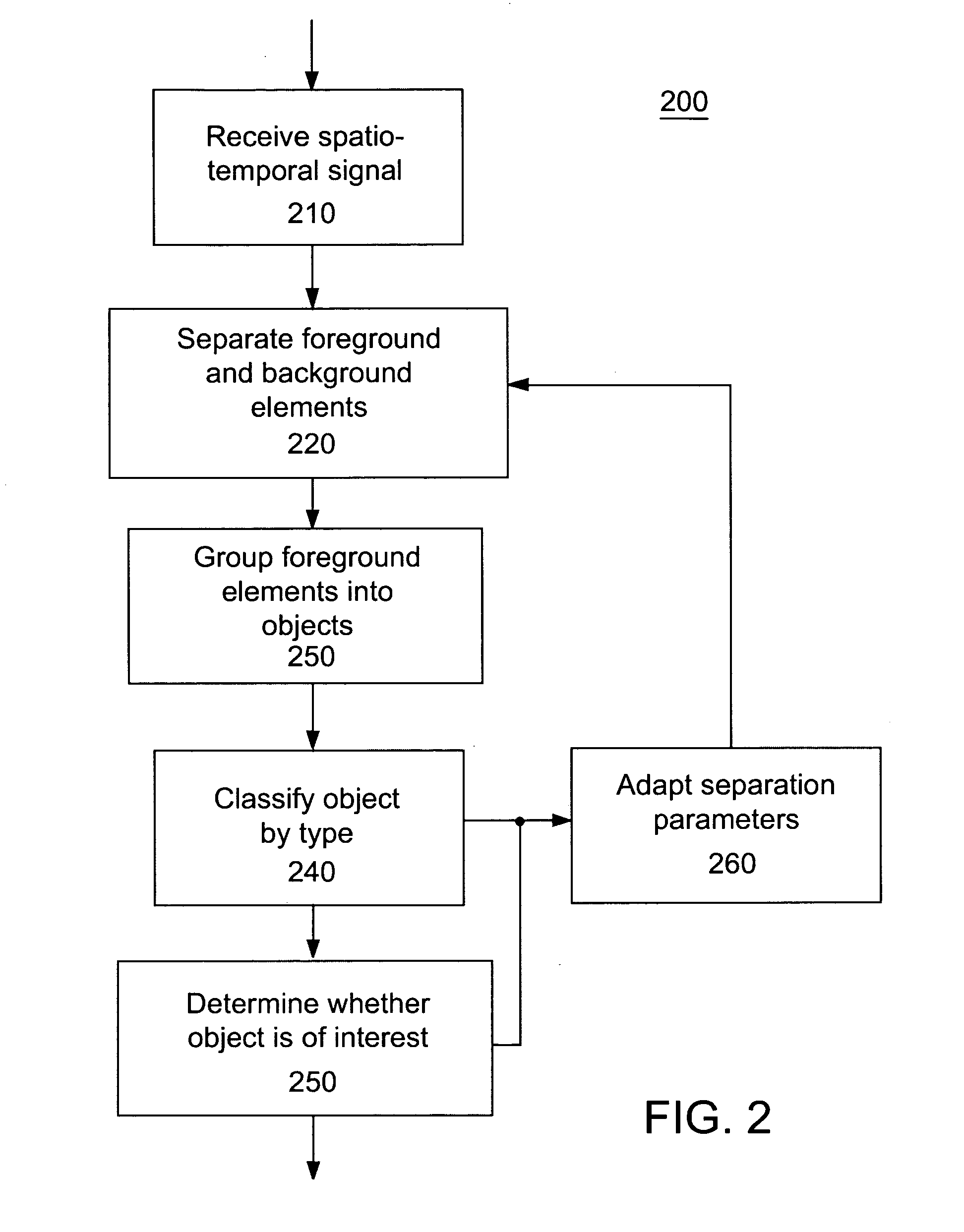Methods and systems for detecting objects of interest in spatio-temporal signals
a spatiotemporal signal and object detection technology, applied in image enhancement, image analysis, instruments, etc., can solve the problems of not being suitable for real time algorithms, being computationally overwhelming, and being susceptible to significant lighting changes in the environment, and being fast, but not as robus
- Summary
- Abstract
- Description
- Claims
- Application Information
AI Technical Summary
Benefits of technology
Problems solved by technology
Method used
Image
Examples
Embodiment Construction
With reference to the above-listed drawings, this section describes particular embodiments and their detailed construction and operation. As one skilled in the art will appreciate in view of this disclosure, certain embodiments may be capable of achieving certain advantages over the known prior art, including some or all of the following: (1) taking advantage of the tremendous amount of object level information available via the classification mechanism as a guiding hand to the online learning algorithm directing the modification of parameters at the foreground / background separation level; (2) increasing sensitivity to subtle differences in the chromatic signature of objects by adapting the parameters discriminatively; (3) increasing performance; (4) reducing computational complexity; (5) increasing flexibility; (6) detecting objects in highly dynamic environments; (7) identifying types of moving objects; (8) better parsing of an environment into regions with salient physical prope...
PUM
 Login to View More
Login to View More Abstract
Description
Claims
Application Information
 Login to View More
Login to View More - R&D
- Intellectual Property
- Life Sciences
- Materials
- Tech Scout
- Unparalleled Data Quality
- Higher Quality Content
- 60% Fewer Hallucinations
Browse by: Latest US Patents, China's latest patents, Technical Efficacy Thesaurus, Application Domain, Technology Topic, Popular Technical Reports.
© 2025 PatSnap. All rights reserved.Legal|Privacy policy|Modern Slavery Act Transparency Statement|Sitemap|About US| Contact US: help@patsnap.com



